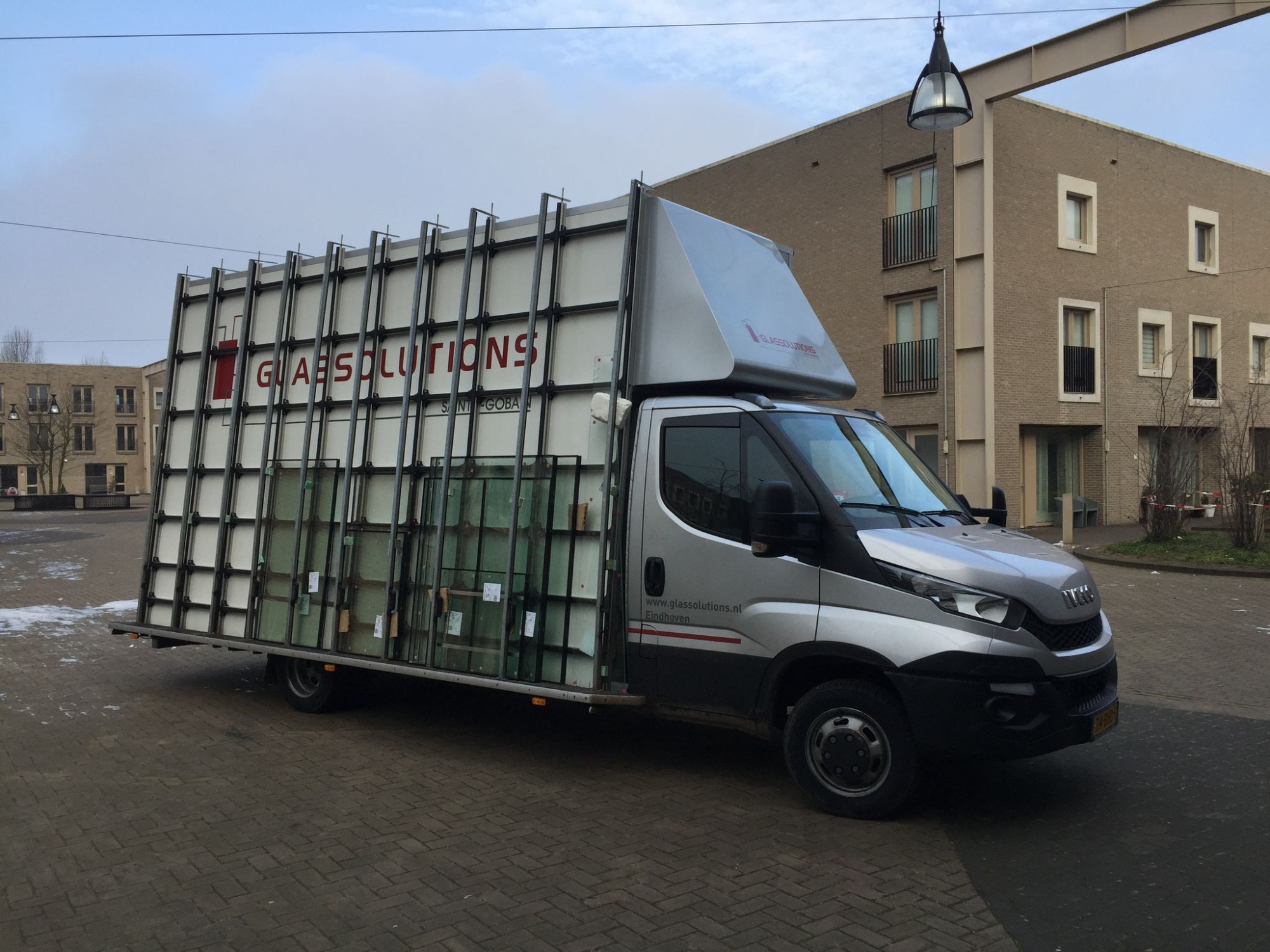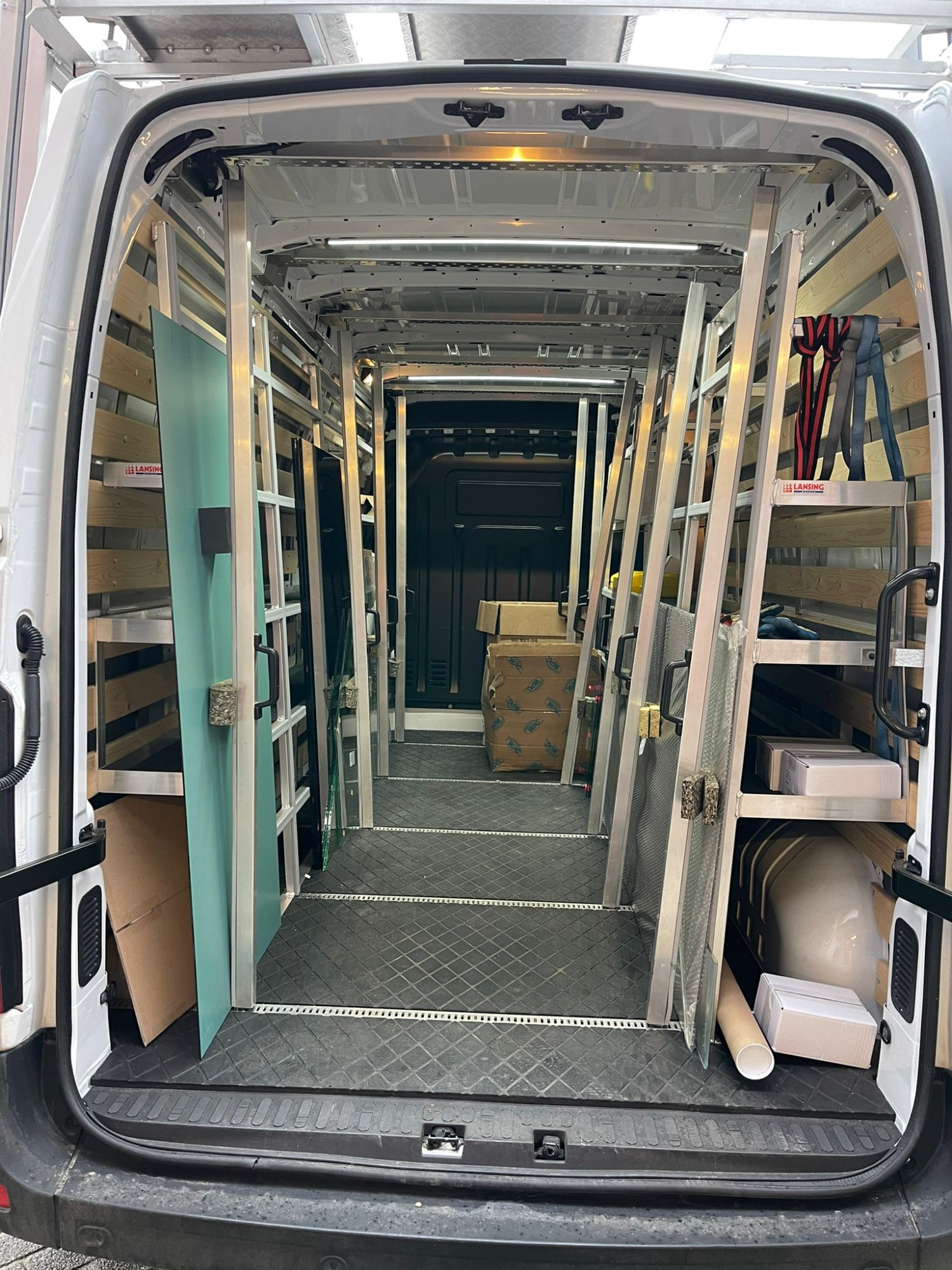Glass transport with specialized glass vans
Glass and mirrors are transported with special glass buses. These buses have two racks on the inside where you can place glass, shelves for small panels and materials, and on the outside, two large racks for the big and heavy glass panes and mirrors. The buses are optimally converted to securely fasten and transport custom glass, mirrors, and related materials.
Due to the weight of glass and mirrors, it is necessary for the driver to get as close as possible to the delivery address. This allows for faster unloading of the glass plates, reducing the need for heavy lifting. The buses are quite large and wide, which can make them challenging to navigate at certain addresses, such as those along the canals in Amsterdam and in city centers. If the address is difficult to access, we appreciate being informed in advance so that we can assess delivery options.
The drivers operating the glass trucks specialize in delivering glass. They are knowledgeable about loading, securing, transporting, and unloading glass. They can provide advice during the delivery and unloading process.
In the glass buses, tools are available, such as glass suction cups, protective materials, and gloves.
Glass on the Outside
On the racks on the outside, you can easily accommodate larger glass panels and mirrors. Here, you have fewer size limitations, allowing you to sometimes fit glass panels of 4000 x 2500 mm (w x h) on the side of the bus. There is an outside rack on both sides of the bus.
Glass Racks
The glass racks on the outside are, like the inside, also lined with rubber; the shelf where the glass rests, the rack on the outside, and the poles to clamp the glass. The rack is placed quite low, making loading and unloading easier. Additionally, you can also place higher windows on the side.
Protection
Glass placed on the outside is exposed to weather conditions and is naturally less protected than when it is indoors. Nevertheless, you can transport glass very effectively in this way. The chance of transport damage is minimal. For example, how often does something hit the side of your own car or side window while driving.






Glass on the Inside
The glass buses have a rubber floor and side racks on the inside, lined with rubber. Glass and mirrors are secured with rubber-coated poles and clamped with foam rubber blocks. This allows you to securely fasten the glass without damaging or breaking it. Inside the glass bus, smaller panels and mirrors can be placed.
Between the glass plates, there are stools or foam blocks. This allows you to stack glass plates behind each other, leaving a small space between them to prevent damage.
Racks
In addition to glass and mirrors, glazing materials, parts, tools, and profiles are also delivered with these glass buses. These materials can be placed in the racks on the side. The racks are lined with rubber, allowing you to place small glass plates in them that are too small to be secured with the poles.
Long profiles can be placed on the ground, behind the glass racks. In the photo, you can see a round cardboard tube lying on the right. It extends all the way to the back of the bus.
Optimal Protection
All parts that come into contact with glass are lined with rubber: the floor, the racks, the poles. When the glass is clamped between the poles and the racks, foam rubber blocks are used. This ensures the best possible fixation of the glass and mirrors.
No Need for Packaging
For the transport of glass and mirrors, there is no need for additional packaging. The trucks are optimized for glass transport without extra packaging.







 Nederlands
Nederlands 